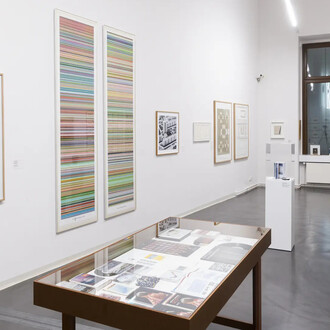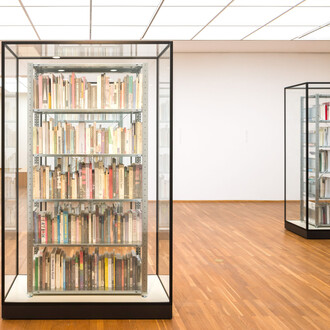Wahrnehmung ist Übersetzung, Kunst ist Transformation – ein Wechselspiel aus Zeigen und Imaginieren, bei dem zugleich auch die Kriterien und Prämissen dieser Erfahrung transparent werden.
(Brigitte Kowanz)
Häusler Contemporary München proudly presents new light works by Brigitte Kowanz whose installation for the Austrian Pavilion at this year’s Venice Biennial gets a lot of attention. The works presented in our show reference the work series that the artist developed for Venice by taking up its key theme, the phenomenon of digitalization, and connecting it to the political steps towards today’s Europe.
Brigitte Kowanz (*1957, Vienna, lives in Vienna) who officially presents Austria at this year’s Venice Biennial ranges among the most renowned international artists with her genuine light works. She visualizes light as an independent phenomenon that does not just illuminate, but that – similar to language – transfers information and generates meaning. Ever since the 1980s the artist has been combining light and language or linguistic codes, to reveal the complex entanglements of vision and comprehension, of perception and cognition.
In the context of her contribution to the Venice Biennial, Kowanz engaged herself intensely with the phenomenon of digitalization. We are delighted to exclusively present in Munich new works that relate directly to the much-noticed installation in the Austrian Pavilion. Only rarely, Brigitte Kowanz presented herself as political as she does in these new works in which she reflects important moments of Europe’s recent history against the backdrop of the digital revolution.
Predominant in these new objects is a neon line full of verve that was designed by hand. It reminds of a cable and is placed within a multi- mirrored cuboid. From a close distance, one can perceive on the glass surface a code running parallel to the neon. It is Morse code which the artist uses to note down important dates related to the European contemporary history: the effective date of the UNO Charta on November 24, 1945; the Fall of the Wall in Berlin on November 9, 1989; the date when the European Union was awarded the Nobel Piece Price on October 12, 2012; or the terrorist attack on Charlie Hebdo’s editorial office in Paris on January 7, 2015. All these dates mark key moments for the supranational association of today’s Europe or – as with Charlie Hebdo – moments where this union was put to test. In these works, the cable as a link, as means to transfer electricity and data becomes a symbol for the third industrial revolution that began in the 1970s and that accompanied and influenced the different stages of the European Union in many ways. None of us and neither Brigitte Kowanz, as she says, are fully aware of the digitalization’s extent and of the impact that it has on our lives and politics. But with her exhibition at Häusler Contemporary the artist succeeds in visualizing this complex phenomenon partly by transferring it to the sensual language of art.
















